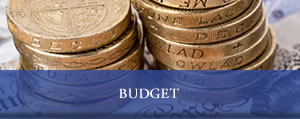Flat Rate VAT
Newsletter issue - May 2014
The flat rate VAT scheme for small businesses is designed to reduce administration hassle for the businesses that use it, not to reduce the amount of VAT the business pays over to HMRC, but that is often a side effect of using the scheme.
You can use the flat rate VAT scheme if you have an annual turnover up to £150,000 (net of VAT). Once registered to use the scheme, you must apply VAT to your sales at the rates required for the particular product or service (20%, 5% or zero). However, when completing the quarterly VAT returns you ignore any VAT paid on purchases, apart from large assets costing over £2000. You calculate the VAT to be paid over to HMRC as a flat percentage of your gross sales, with the percentage used determined by the trade sector which most of your sales fall into.
For example a hairdresser which is registered for the flat rate scheme must use a flat rate of 13%. On sales of £3,000 in the quarter she charges VAT at 20%: £600. She will pay VAT to HMRC of: 13% x £3,600 = £468.
You must choose to register for the flat rate VAT scheme, it will not be offered to you, even if you would be better off using the scheme. When you register you must choose which of 55 trade categories best fits the majority of sales made by your business. This is important as the flat rate percentages vary from 4% to 14.5% for different trade sectors, so an incorrect choice of trade sector can be very expensive.
You can change the trade sector you opt to use, but HMRC generally only permit a change to be made from the beginning of the current VAT quarter. You must also review the trade sector chosen on the anniversary of starting to use the flat rate VAT scheme. If your sales mix has altered so most of the sales are in a different trade sector, you must switch to using the flat rate percentage relevant to the majority of your sales. We can help you decide if the flat rate scheme would be advantageous for your business.
 Cookies are small text files that are stored on your computer when you visit a website. They are mainly used as a way of improving the website functionalities or to provide more advanced statistical data.
Cookies are small text files that are stored on your computer when you visit a website. They are mainly used as a way of improving the website functionalities or to provide more advanced statistical data.














